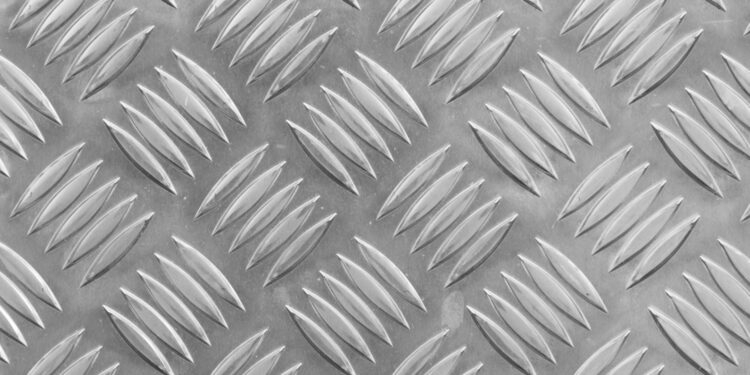Build a Stronger Work Surface With a Material That Doesn’t Quit


Workbenches and tool tables get used hard. Between hammering, cutting, drilling, and sliding heavy gear around, those surfaces take a beating. Most are made from wood, and while that works fine at first, dents, splinters, and wear marks start showing up fast—especially in garages or sheds where jobs get messy. The more projects you do, the more beat-up the surface gets.
Instead of replacing wooden tops every year or covering them with more layers that eventually peel or crack, there’s a smarter fix. Using a solid top material that can handle real use without breaking down makes everything easier in the long run. That’s where tread plate comes in.
Table of Contents
Why Tread Plate Makes Sense for Work Surfaces
A lot of people think of tread plate—the kind with the raised diamond pattern—as something used for floors or stairs. And yeah, it’s great there. But it’s also perfect for work surfaces that need to be strong, non-slip, and easy to clean. One reason it works so well is because of what it’s made from.
Aluminium tread plate is strong without being heavy. It won’t rust, it holds up under pressure, and it keeps its shape even after being used every day. You don’t have to baby it, and you don’t need to replace it after a few months of hard work.
If you’re planning to upgrade an old bench or build a new one from scratch, it’s a good idea to buy aluminium tread plate and use it as the top layer. It adds a tough, grippy surface that won’t dent from dropped tools or stain from oil spills.
Wood Isn’t Always Enough
Wood is easy to work with, but it doesn’t stay perfect for long. Even thick plywood can chip or splinter when tools are dropped or when screws and bolts get driven into it over and over. If glue or paint dries on it, the surface can get rough. And if water or oil gets in, the top may warp or soften.
Some people use rubber mats or hard plastic to protect their wooden benches, but those can wear out too. They might slide around or peel up at the corners. Once they start coming loose, they’re more annoying than helpful.
A metal surface doesn’t have that problem. Aluminium tread plate stays flat, doesn’t absorb liquids, and doesn’t shift around when pressure is applied. It can handle heat, heavy parts, and sharp tools without showing much damage at all.
Where to Use It
The best place to use tread plate is right on top of any workbench or table that gets a lot of use. That might be in a garage, garden shed, or even a small DIY station in a utility room. It works great in corners where tools are mounted, under vices, or on tops of mobile tool carts where things get moved and loaded all the time.
It’s also a solid choice for outdoor benches that are used for building, repairing, or even cleaning gear. Since aluminium doesn’t rust, it can stay outside without worrying about it falling apart after rain or frost.
Some people even use smaller pieces of tread plate as cutting or drilling stations. It protects the surface underneath and stops damage from spreading.
How to Fit It to Your Bench
Installing tread plate as a bench surface is simple. First, measure the size of your table or workbench. Then get a sheet of aluminium tread plate that fits—or order a custom-cut piece to make things easier. Once the plate is in hand, line it up with your bench and screw it down at the edges and corners.
If the corners are sharp, it’s a good idea to sand them slightly or use edge trim to make the bench safer to lean on. Some people also add a layer of foam or thin board under the metal to help reduce noise when working.
The raised texture on the surface gives you grip, so tools and parts don’t roll around as much. But it’s still smooth enough to wipe down quickly with a cloth or brush. That helps a lot if you’re working with grease, sawdust, or paint.
Makeshift Fix or Long-Term Solution?
Covering a work surface with aluminium tread plate isn’t just a temporary fix. It’s something that lasts. Whether it’s used once a week or every single day, the metal holds up. That’s why it’s often used in trucks, trailers, and toolboxes. If it works there, it definitely works on a bench.
It also makes the bench feel more solid. Even if the base is made from basic wood or an old table frame, adding tread plate to the top makes it feel brand new again. It changes how the surface handles weight, pressure, and movement.
And the best part? You can do it once and not worry about it again. No more repainting wood tops or patching up chips. Just a clean, tough surface that’s ready for whatever project comes next.
A Small Change That Pays Off
Not every DIY project needs a full rebuild. Sometimes just changing one part makes the biggest difference. Upgrading the work surface with aluminium tread plate makes the space easier to use and more reliable for everyday jobs.
Whether you’re into woodwork, car repairs, small home fixes, or crafts, having a bench that won’t fall apart is a huge bonus. And since aluminium is light and easy to work with, it doesn’t add a lot of hassle to the build.
It’s a smart, simple upgrade that keeps working long after other materials wear out.
Why This Upgrade Makes Sense
If a work surface is starting to look worn, or if a new bench is in the works, adding aluminium tread plate is a solid idea. It protects against dents, gives better grip, and handles messes without soaking anything up. It can be used indoors or out, and it makes basic benches feel heavy-duty.
Building smarter doesn’t mean building more. Sometimes, it’s just about using a better material in the right place.






